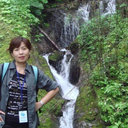The application of combined 1H NMR-based metabolomics and transcriptomics techniques to explore phenolic acid biosynthesis in Salvia miltiorrhiza Bunge.
Ключавыя словы
Рэферат
Salvia miltiorrhiza Bunge is a traditional Chinese medicine, and its water-soluble phenolic acid active compounds have very important medicinal value; however, the synthesis pathways of the main active ingredients remain unknown. Here, we employed nuclear magnetic resonance (NMR)-based metabolomics and transcriptomics techniques to study the biosynthesis mechanism of salvianolic acids. High-performance liquid chromatography (HPLC) combined with NMR showed an improvement over traditional techniques, and 54 metabolites were detected. The results of the multivariate statistical analysis showed that salvianolic acid B (SAB), rosmarinic acid (RA), caffeic acid, succinate, and citrate were among the multiple compounds that were increased in the methyl jasmonate (MeJA)-elicited group; the levels of sucrose, fructose, glutamine, and tyrosine were decreased. Combined with the differentially expressed genes (DEGs) found by transcriptome sequencing, we speculate that the synthesis of RA after MeJA treatment mostly occurred through caffeic acid and bypassed 4-hydroxyphenyllactic acid. This provides useful information for the study of salvianolic acids synthesis.



